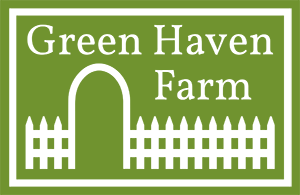Home Garden Certification
By Cathrine StClair
Home gardens (and gardeners!) are becoming increasingly important in the battle to develop, maintain and improve natural habitats. In response to this, home garden certification programs have been developed by a few different organizations.
These certification programs are each created by an organization with a particular area of concern. They may focus on Monarch butterflies, bees, or birds – or widen the focus to all pollinators or even all wildlife. In general, they provide a checklist or overview of elements and practices to support that focus, and have a means to register participation—and usually some signage to let people now what you are up to in your garden.
While the different organizations may have their own unique areas of concern, there are some elements that are common to most of them. These elements include:
An emphasis on incorporating native plants into the landscape to provide food sources compatible with native animals.
Reducing large expanses of the same, often non-native plants in order to improve biodiversity, provide food sources and shelter, and better control water flow and run-off. One example of this is replacing some lawn with a mix of native plants.
Providing food sources and shelter that spans across all the seasons. This may mean planting a variety of plants that bloom at different times throughout the year and also providing plants that offer seeds, berries and nesting materials.
Ensuring that resources like food and shelter are present for all the life stages. For example, providing plants that feed caterpillars as well as butterflies.
Trying not to be too neat and tidy. Wherever possible, delay garden clean-up until things warm up in spring to supply overwintering shelter and food sources. Expect and tolerate some plant damage.
Avoiding chemical intervention whenever possible and employing integrated pest management.
Providing supplemental support when needed. In particular, providing water sources since many urban and suburban areas have eliminated surface water sources. In degraded landscapes, supplemental food (like bird feeders) and supplemental shelter (like birdhouses and brush piles) can also be helpful.
While certifying a home garden is surely not necessary to garden for nature, it can have some benefits. The certification process can provide a framework or roadmap for implementing natural habitat improvements. Adding signage can be educational for others who visit or see a garden, and it can help people understand some “non-traditional gardening” practices like delaying garden clean-up.
And once you get your little patch of habitat started, you can add it to the Homegrown National Park!
Below is a summary of some of the home garden certification programs I have found. For all of us in Pennsylvania, I would recommend looking at the Penn State Extension certification program first. It has more detailed information that is tailored to our area.
If you know of other certification programs I missed, please add them in the comments!
Penn State Extension – Pollinator Garden Certification
This is a Pennsylvania-specific program. The focus is on creating pollinator habitats, including food and water sources, shelter, and practices to maintain the habitat going forward. The site has many links to great resources. The certified gardens are mapped. The application is more detailed than others and requires pictures of the property.
National Wildlife Federation – Certified Wildlife Habitat
https://www.nwf.org/garden-for-wildlife/certify
The focus here is on general wildlife habitats for a range of insects, birds, reptiles, and mammals. Certified Wildlife Habitat® applicants are asked to confirm they’ve provided the required number of elements for food, water, cover, places to raise young, and sustainable environmental practices. They provide a checklist to prepare for certification.
Monarch Watch – Monarch Waystation Certification
This one focuses exclusively on Monarch butterflies. The butterfly habitat must be at least 100 square feet (can be split up on the property), include milkweed and nectar plants, and provide shelter. The waystations are mapped.
Audubon Society - Bird-Friendly Habitat recognition program
https://pa.audubon.org/conservation/bird-friendly-habitat-recognition-program
The application details different requirements for bird habitats including food, water, shelter and protection from predators. The site has free bird-friendly garden plans.
North American Butterfly Association – Butterfly Garden Certification
http://nababutterfly.com/butterfly-garden-certification-program/
This focuses on food sources for caterpillars and nectar sources for butterflies. Simply submit lists of plants in the categories grown. There is a separate Monarch certification if milkweed is grown.
Xerces Sociery - Bring Back the Pollinators Campaign
https://xerces.org/bring-back-the-pollinators
The pledge requires a commitment to providing pollinator-friendly flowers and nest sites, avoiding pesticides, and spreading the word about the plight of pollinators. Completing the pledge will add a garden to the Million Pollinator Garden Challenge.





